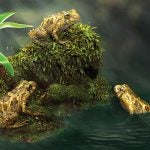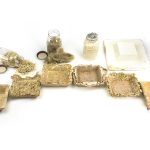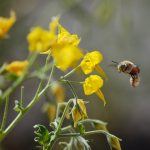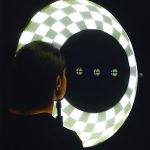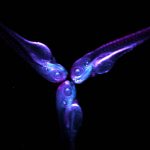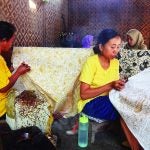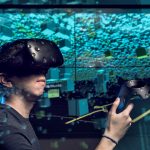Innovation in an image
The annual Image of Research competition provides UIC graduate and professional students the opportunity to present their research through a new medium and to a new audience.
The competition, which is cosponsored by the Graduate College and the University Library, invites students to look at their work in a new light as they develop an image that encapsulates their research.
“When you take time to look at your research and think, ‘What does this look like to the world?’ and carry a third lens to your own stories, you can find a lot of story there to tell,” said Kevin Monahan, coordinator of the Image of Research exhibition and director of graduate program review and information systems.
To help tell that story, each image is accompanied by a short text to provide non-technical insight into the subject. This year a multidisciplinary judging panel evaluated the 128 still and moving image submissions based on their originality, relationship to student’s research, and aesthetic appeal.
“These students don’t claim to be artists,” Monahan said, “[but] they are bringing art to the campus.”
All winning entries can be found online. They will be on display in the Richard Daley Library and Library of Health Sciences from Nov. 1 through Jan. 30. To celebrate the 10th anniversary of the competition, the opening reception Oct. 24 will be held in a new location: Gallery 400, 400 S. Peoria St. The reception is open to the public and guests are requested to RSVP by Oct. 13.
“We want to showcase the talent here at UIC,” Monahan said, “and show the city what a wonderful asset a [Carnegie] Research I University is.”
This year, the first-place winners of the still and moving image categories came from the biomedical and health information sciences department.
“Since our program is so visually oriented, we are heartily encouraged by our professors and fellow students to apply to the Image of Research competition,” said Ashley Ulm, a recent graduate of the department’s biomedical visualization program. Ulm was recognized for her movie animation illustrating new liver transplant research that involves induced pluripotent stem cell technology.
“While the decellularization procedure is not yet used in human transplant situations,” said Ulm, “it has the potential to change the way things are done, and to inspire new avenues of thinking that could lead to even more change and innovation in health care.”
Ulm seeks to contribute to that change by making advances in organ donation accessible to a lay audience through visual storytelling.
Esther Chun Chun Ng’s award-winning image presented a subject that is probably more familiar to the public — frogs. A newly discovered Ecuadorian species of frog, the Pristimantis mutabilis, has the unique ability to alter its skin texture from tubercular to smooth as an adaptive mechanism to environmental conditions.
“I consider how to communicate the science of this frog to the general public using my visualization skills,” Ng said.
In the creation of the image, Ng considered three different elements of her research: the science, the art and the technique. With the use of a new layering function through the Pixologic ZBrush animation program, Ng was able to use the same 3-D model to depict three frogs with varying degrees of smoothness.
“Seeing these images, viewers are inspired to learn more about the research and potentially get involved,” Ulm said. “This competition also connects researchers across departments and platforms and opens new communication and collaboration opportunities.”
Alexandra Basantes Defaz, a master’s student in civil and materials engineering, values the exchange of ideas that the competition promotes. Her second-place image, “Intelligent Welding,” depicts herself in the process of welding, as sparks fly inches from her face. Her research goal, as written in her image description, is to develop welding technology that can make intelligent decisions in response to process variables, disturbances and tool deteriorations.
On a more personal level, however, her goal is show that women (even those who are just over 5 feet tall, like herself) are capable of commanding such high-power machinery.
“I believe that welding research is of great significance for all current construction and rehabilitation projects in today’s world,” said Basantes Defaz, “and I want to be a contributor for this industry.”
